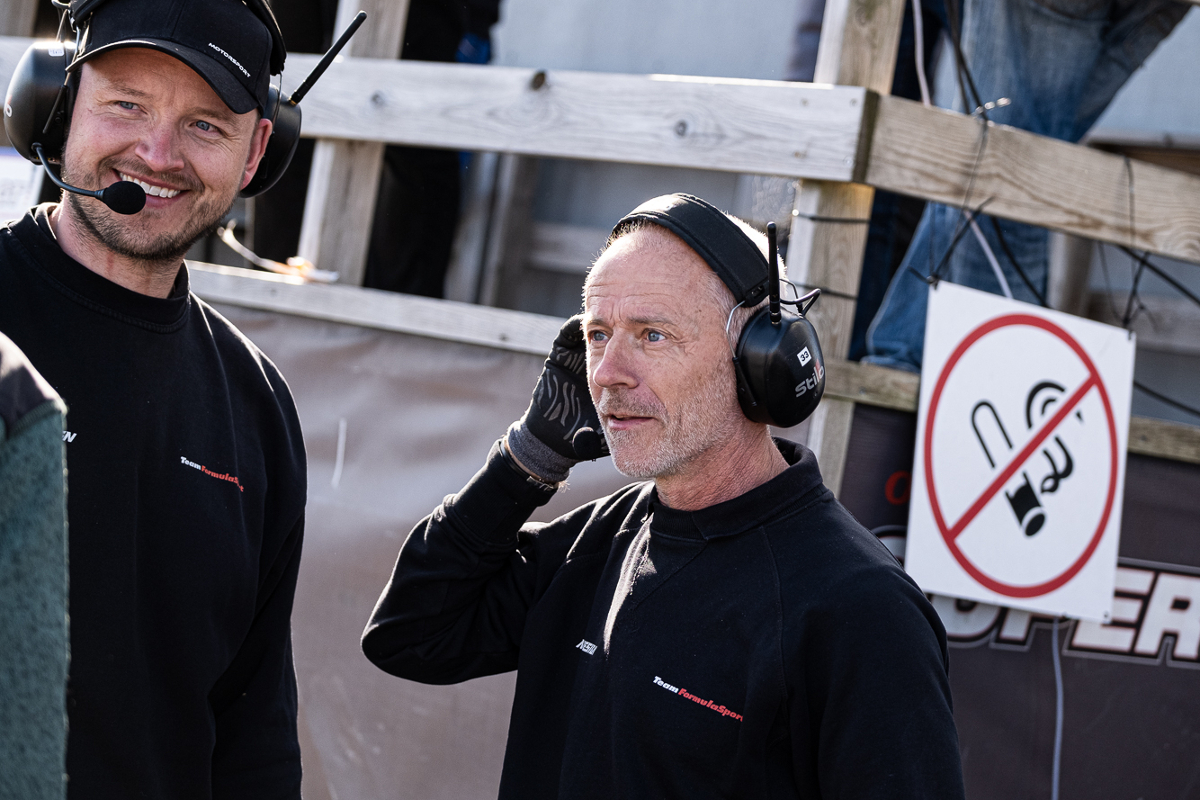
Photos: Boxengasse Media
A well-known name in Danish racing returned to single-seaters in 2021, and explained to Formula Scout last year what attracted him back to running a team in an entry-level junior series
The Danish Formula 4 championship has grown in status and scale since its creation in 2017, with graduates already in IndyCar, Indy Lights and Formula 2. But the teams it has attracted is also of interest. Christian Lundgaard and Frederik Vesti raced in entries run by their own families, former Formula 1 and IndyCar drivers Jan Magnussen and Hideki Noda had their own teams, and Henrik Jacobsen has entered his Team FormulaSport operation into the series since 2021.
In addition to being team manager, Jacobsen is also a race engineer for his small squad which has picked up five wins and 11 further podiums with two cars over a season-and-a-half. For 2023 it has retained its race-winning rookie of last season, Theodor Jensen, and also signed shifter karting graduate Mathias Bjerre Jakobsen and Morten Stromsted, father of 2021 series runner-up Noah Stromsted.
Back in the 1980s, Jacobsen himself was a driver in junior single-seaters. He spent several years in Danish Formula Ford, culminating in the 1988 title (and second place in the Nordic championship that year), then stepped up to Danish FF2000. He raced against the likes of future Ferrari F1 drivers Mika Salo and Michael Schumacher, but couldn’t progress any further up the ladder and so decided to switch over to running a car rather than racing one.
In 1991 he created Team FormulaSport to compete in Danish FFord, and one of his very first drivers was Magnussen.
“Just for two races,” Jacobsen remembers. “That was his first year, because he’d just finished karting, and that was my first year with a semi-professional team. So I had a friend who had a [punt] and he said: ‘What about Magnussen? He’s a good name, he’s a good karter, should we try to put him in a formula car?’.
“I said ‘yeah, okay, if you can pay then I can do the rest of it’. So we just managed to – he said [to Magnussen] ‘you don’t have to pay anything, you just drive the car’, and it worked. He was very good.
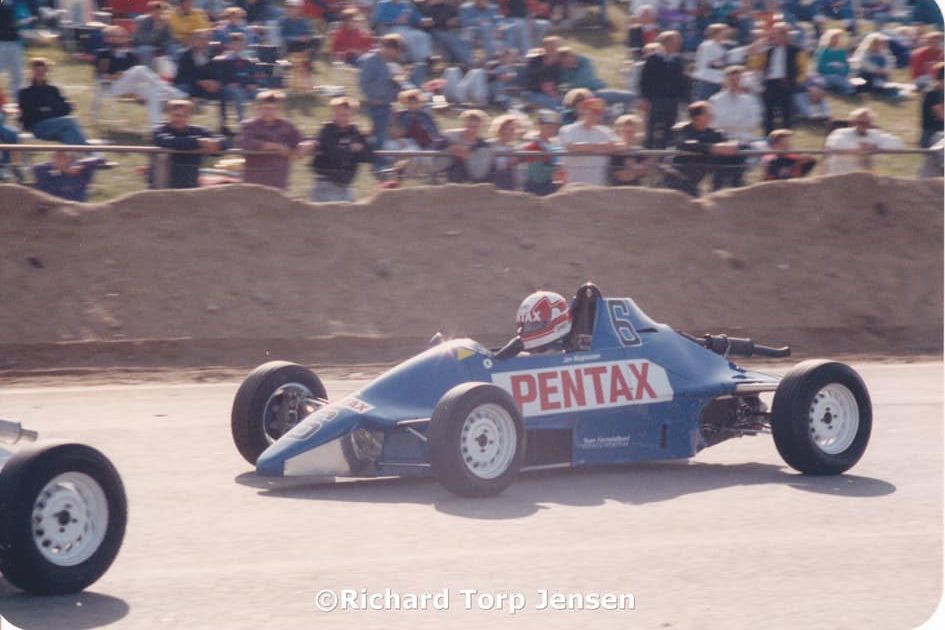 “I had another guy, called Lasse Jakobsen, also from Denmark. He was as good as Magnussen, he was very, very talented, very talented. And he also went to Germany to do FFord, then with me also did the Festival.
“I had another guy, called Lasse Jakobsen, also from Denmark. He was as good as Magnussen, he was very, very talented, very talented. And he also went to Germany to do FFord, then with me also did the Festival.
“Then he went into Formula 3, but then they changed the whole regulations in Germany at that time so they have an A car and a B car. He was in a B car, and he was way back so you couldn’t see how fast and how good he was, so after that season actually, strange enough, they quit. That was a pity, because he was also in karting exactly at the same level as Magnussen. He was very, very good.”
Between Magnussen and Jakobsen, the team had success at home and in Germany with Jakob Sund and Michael Schroeter. It then moved into Formula Renault 2.0 as the 21st century beckoned, winning the Scandinavian championship with Kasper Andersen in 2004 and coming fifth in the 2007 Northern European Cup behind Valtteri Bottas and Oliver Oakes with Steffen Moller. The team left single-seaters after that, but Jacobsen remained involved in the junior series by engineering for others.
“I think there was a lot of prestige about FFord years ago,” Jacobsen reflects. “And also if you go abroad and you do some German championship, European races, the FFord Festival, a few races in England, that was quite tough because you learned a hell of a lot when you left Denmark. Then you really start to learn driving, and then when you come back to Denmark then you are suddenly way in front of the other guys.
“I just think that everything has become more professional [since then]. Maybe I have also been a part of that in Denmark, because I was the first who did a racing team where I did it and I lived by doing this, that was my profession. And nobody did that before. So I also had to go abroad and do the European and German championship etc so I could [make a living], it was not enough just to do it in Denmark. You have to do more.”
While the team followed the junior single-seater trends of the time during its first spell with open-wheel cars, Jacobsen has kept it small-scale since leaving Denmark’s Super GT series to return to single-seaters, and he has a five-person team including himself. What brought him back to the entry-level formulas?
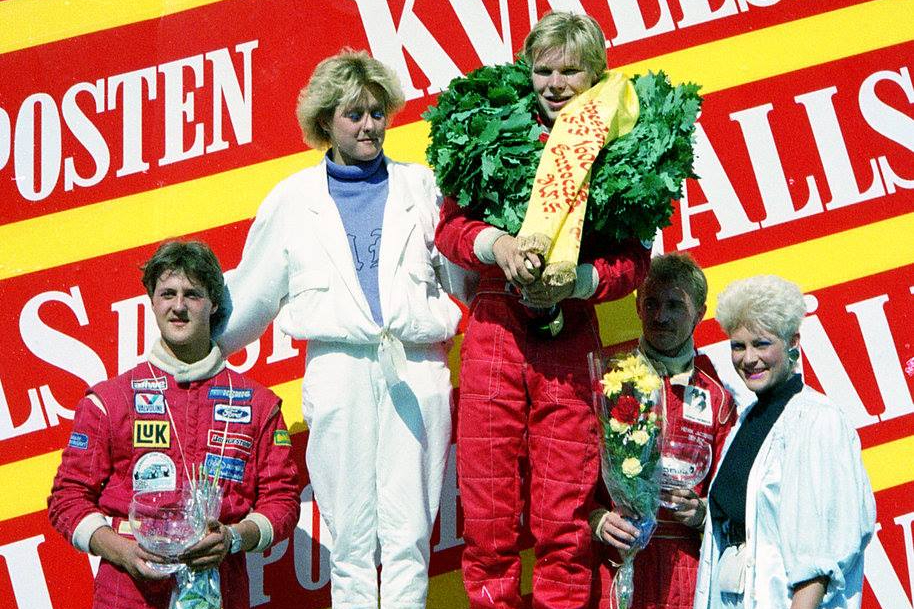
L-R: Schumacher, Salo & Jacobsen
“It’s a little bit that it’s in my blood, single-seaters. That’s a real racing car,” he explains.
“And then I also like to work with young people who are coming directly from karting and have an idea that, okay maybe they don’t get into F1 but at least they try to push in that direction. And then I think it’s more nice to help young people out of karting and into motorsport in the professional way instead of older people who just want to do Super GT or TCR, or whatever.
“It’s better for me, I think it’s more appropriate to do it in that way, and then it’s also a little bit easier to handle those smaller cars instead of the big cars. You need at least to be five guys just to push around the car and change the car, the formula car is so much easier. So much better. So that’s basically the reason why I wanted to go back, and then there were a couple of guys who asked me if I could do it, and ‘yes, of course, no problem’, and then I just did it.”
He adds: “Everything has just become more and more professional [at these lower levels]. Sometimes you miss a little bit the old days where there was no video, you just used the brain yourself and tried to get the best out it. And then speak with the driver about the corners and the gear ratios and all this, in the old-fashioned way, that was also nice. Now we have data-logging, we have video and everything, and sometimes despite having all this, the driver can’t change anything. Sometimes.”
Team FormulaSport’s current arrangement is “the customers own the cars, and I maintain them completely; they’re in my workshop and so on, but they own the cars”.
“I have them all around the tracks and in the truck, and I maintain them with everything. So it’s just when the season is over they get the car back. So I take care of everything.”
In addition to the six race weekends, the team will do at least eight test days and those will be undertaken in Sweden as well as Denmark. Different lessons can be learned in the car from the different tracks in the two countries.
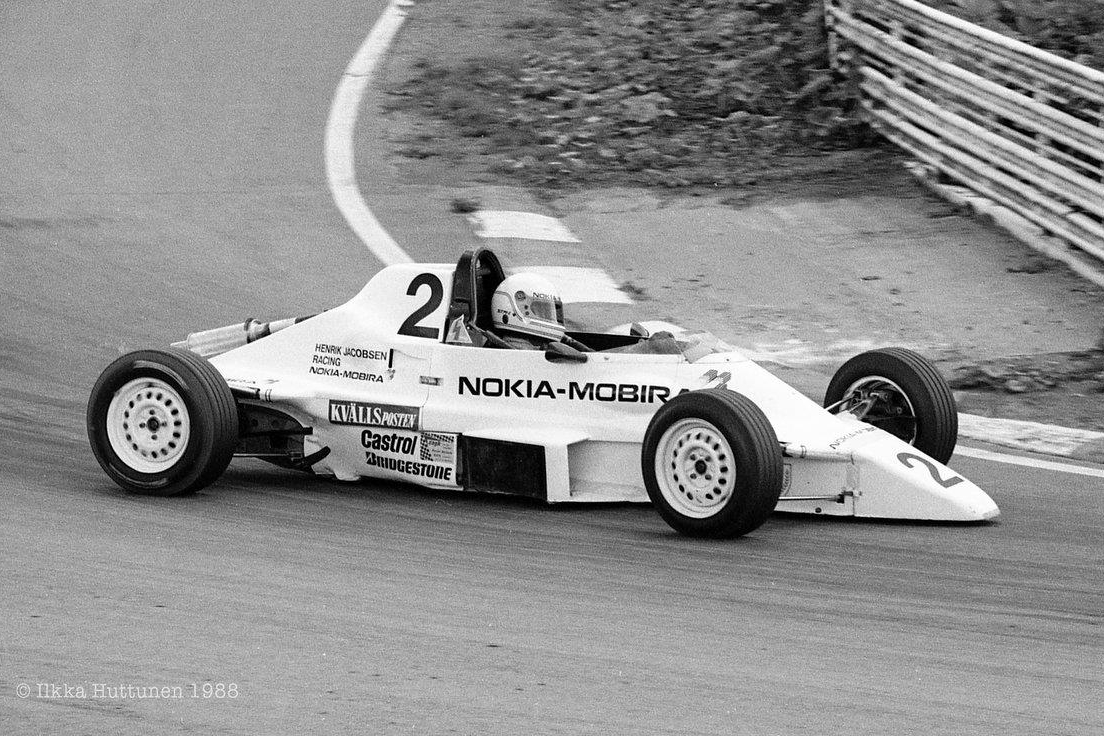 “What you do learn here in Denmark is a lot of mechanical grip, you learn how to play with the rollbar and the springs and things like that. So basic knowledge. And you have small tracks, so you are always turning. You can’t relax, really.
“What you do learn here in Denmark is a lot of mechanical grip, you learn how to play with the rollbar and the springs and things like that. So basic knowledge. And you have small tracks, so you are always turning. You can’t relax, really.
“That works to help the driver, that they find out that it’s quite difficult, quite tough for them on their body, so they have to exercise. When you go on a big track, then you can always relax when you have straights. You can’t relax here, so therefore I think it’s a good school to do it here, but also all those starts that you have up here in Denmark are very good, and in 2022 we have used four tracks, so you don’t come to a lot of different tracks.
“So it’s a little bit quite simple, and mainly when we do testing we do it at [airfield track] Padborg Park. They learn Padborg quite a lot, and Jyllandsringen they are maybe two test days of the year, and a little bit in Sweden. So I think it’s okay; you actually get quite a lot for your money up here.
“I know it’s not brand new cars, but it doesn’t matter. I think it’s a good school, and when you are in karting, if you are good, get out of karting and get into a formula car and learn something for cheap money and then continue. That’s my philosophy, that’s much better.”
Team FormulaSport has “a snowball building” with its strategy to run a F4 sophomore alongside a rookie each year. It then keeps on that rookie for a second season, with the experienced driver moving on and being replaced by a rookie.
“There are a some drivers going abroad [straight from karting], but it’s quite expensive. Some drivers are looking at the Spanish and Italian F4 championships because they want to go there, but it’s so incredibly expensive to do those. Therefore my perspective is for those young drivers, take one year in Denmark and learn a hell of a lot. And get 18 stops when you learn a lot, instead of spending thousands, millions and look a little bit crazy because you have no experience. Get some cheap experience here and take onboard the knowledge with you from a year, then maybe do one or two years in Spain or whatever. That’s more sensible.”
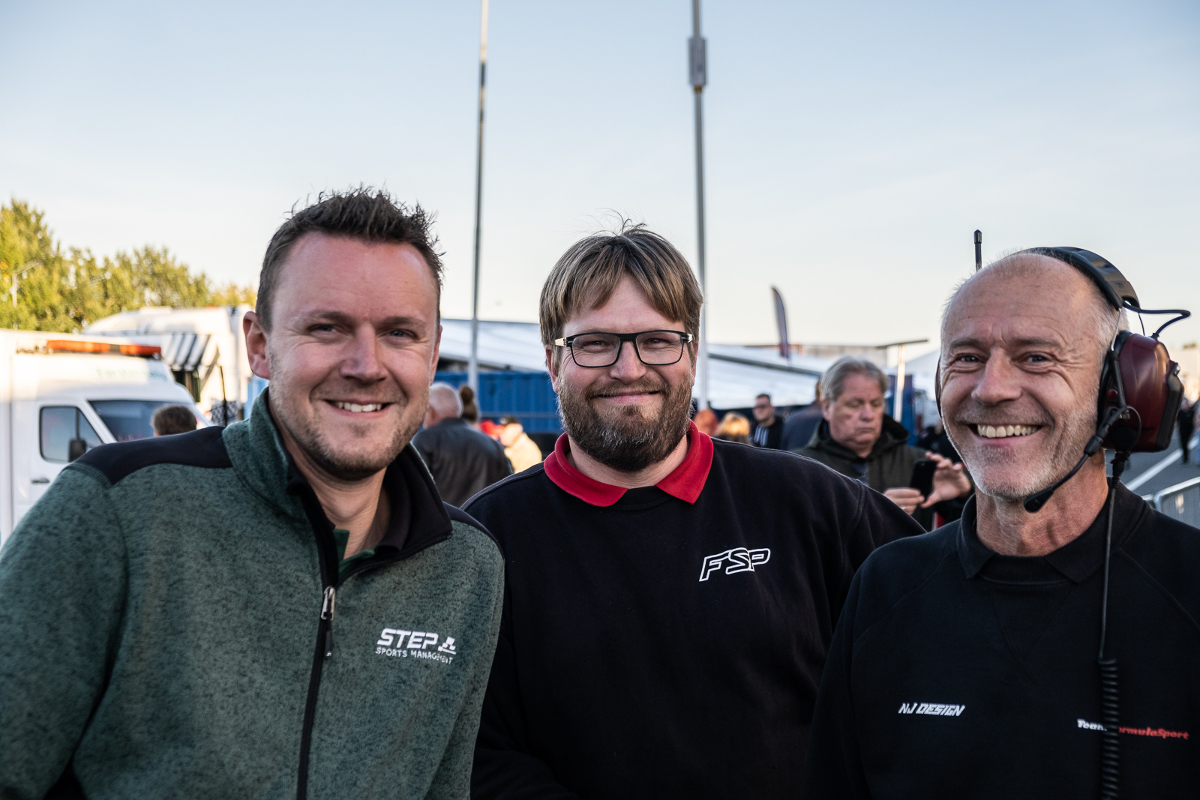
Danish F4’s ‘rival’ team bosses
As for staying in karting an extra year rather than making use of Danish F4’s minimum age for entry being 14, Jacobsen adds:
“Karting is crazy. You can be damn good, then you change the team and you are absolutely nowhere the next year. That’s not because you are a bad kart driver. Crazy. But that’s motorsport. This is more normal. Much more normal.”
In other countries where the minimum age for F4 and other entry-level single-seater categories is 15, there are small sportscars or touring cars that can be raced at 14 instead so drivers can get used to racing on full-size tracks without the risk of losing aerodynamic appendages or being sent rolling by wheel-to-wheel contact.
Jacobsen thinks going from karts to aerodynamic-dependant winged cars at that age is a challenge, but one with a clear learning path to grasp.
“I don’t think the wings are so complicated. The most complicated thing is for the driver to understand that they can actually go faster in a corner and use the wing. First of all, if you go into a corner, the car will be nervous. Then you just have to go 10-15kph faster, then it stops being nervous. But then again there will come a new point where it starts to get nervous, and that’s where we have to go for, and to help young drivers figure that out, that’s quite interesting.”
He also talks about how set-up changes in winged cars don’t lead to extreme changes in pace on Danish tracks, but what’s important is “getting into the head of the driver” that they have to have the confidence to push to make the most of changes.
“And give them a good car which works on lap one, but also works by the last lap. That they have something which they can work with, a good car from start to finish. You can easily make a car which is good at the beginning and shit in the end, or vice versa. That’s my concern, we have to do [changes with the driver on] test days so we know that it will work the whole time.”

Photo: Boxengasse Media
Danish F4 will share grids with Formula Nordic‘s FR1.6-spec cars this season, in addition to the FFord-based Danish Formula 5 cars, and races will take place at more of Sweden’s tracks. It’s going to make the series a more intruiging watch than ever, and it could be Team FormulaSport’s year when it comes to title success.
The season kicks off this weekend at Padborg Park, and with a big grid combining all the classes – and set to feature overall 2021 champion Mads Hoe – there could be some frantic race action.
2023 Danish F4 calendar
1 Padborg Park, DK: April 29/30 2 Anderstorp, SWE: May 12/13 3 Karlskoga, SWE: June 3/4 4 Ring Djursland, DK: September 2/3 5 Padborg Park, DK: September 15/16 6 Jyllandsringen, DK: September 30/October 1
This year’s returning talents
F4
Victor Nielsen – 5th in 2022 (1 pole, 6 podiums), Magnus Pedersen – 6th in ’22 (5 podiums), Theodor Jensen – 7th in ’22 (1 win, 3 podiums), Frederik Stena – 8th in ’22 (1 podium), Michella Rasmussen – 14th in ’22, Mikkel Pedersen – 16th in ’22, Morten Stromsted – 17th in 2021
F5
Mads Hoe – 2020 F5 champion, 2021 F4 champion, Mille Hoe – 2022 F5 champion, Oliver Kratsch – 3rd in 2022 (F5), Niels Einar Rytter – 4th in 2022 (F5), Line Sonderskov – 5th in 2022 (F5)
More on Danish F4
2022 season review
Danish F4 pushes forward with FNordic alliance in 2023 calendar
Life as a small F4 team: Formula Scout’s Danish adventure
How Danish F4 sees itself, and its future
The Danish F4 do-it-all who gave others a chance to take the 2022 title